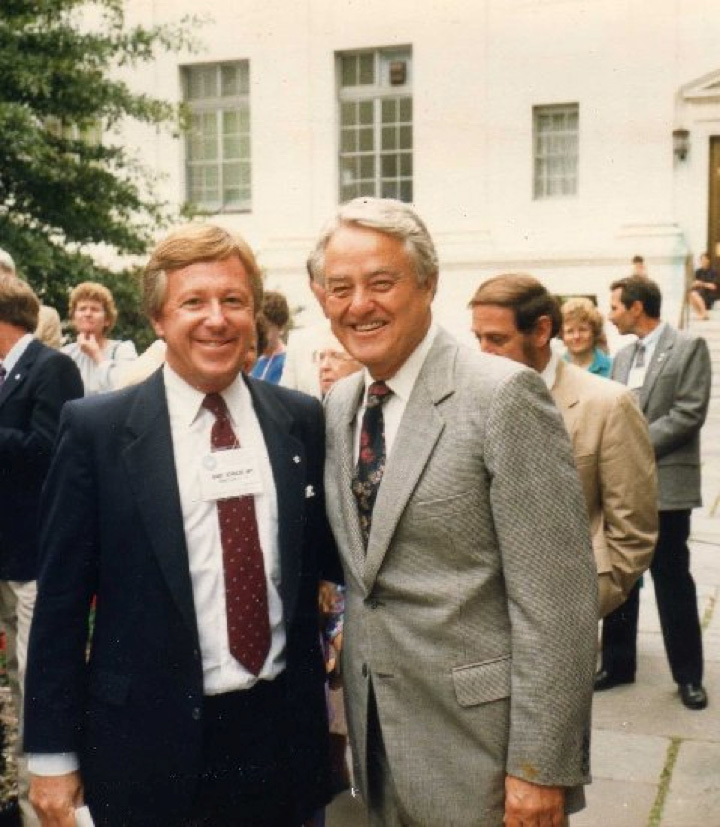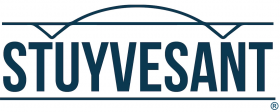Gary Schulze, ’55, on November 22, 1963
In our previous newsletter, we published an article written by Tim Bolton ’65, recounting his experience on the day of John F. Kennedy’s assassination, which occurred while he was a student at Stuyvesant. We asked alumni to send us their own memories of the events of November 22, 1963.
I had just returned from serving in Sierra Leone and was doing recruitment work for the Peace Corps. I was sent to Pittsburgh on November 21 together with Coates Redmon from Peace Corps Public Affairs to do an advance trip for Sargent Shriver who was scheduled to visit the city for a recruitment drive at the University of Pittsburgh and Carnegie Tech the following week. We had two recruitment booths in the city – one at the KDKA television studio and the other at Kaufmann’s Department Store in the downtown area. I was alone in a taxi on my way to the TV station when the driver received a message on his radio from an obviously disturbed dispatcher telling him that President Kennedy had been shot in Dallas. It was about 1:45pm Dallas time. When I got to the station a crowd was gathered around three TV sets in the lobby. There was just a black screen with the message, “CBS NEWS BULLETIN.” Dan Rather was reporting in the background, “Vice-President Johnson has just entered Parkland Hospital holding his chest. We’re not sure yet if the Vice-President was shot or if he might have suffered a heart attack.”
People on the streets were doing Christmas shopping and there was a festive mood in the air. It was obvious the news had not reached them yet.
I left the studio and walked several blocks down to Kaufmann’s. People on the streets were doing Christmas shopping and there was a festive mood in the air. It was obvious the news had not reached them yet. Just as I entered the department store, I heard an announcement over the public address system saying the President was dead. People began crying and saying, “No, oh no!” The RPCVs at the recruitment booth were all in tears. Just then a man came up to me and said, “Thank God that bastard is dead. That should be the end of your damn Peace Corps.” I was stunned by his remarks because I had forgotten how much hatred there was for JFK in some ultra-right wing groups. Other people came over to us and expressed their sorrow at the loss of the President. That night I watched the continuous TV coverage of the assassination and the career of John F. Kennedy.
The next morning, as I sat at the counter having coffee at Pittsburgh Airport, an announcement came over the radio at the lunch counter saying that the man who was suspected of shooting the President had just been shot himself by an unidentified assailant in the Dallas jail. When my plane arrived in Washington I got into an airport limousine with several strangers. As we drove towards downtown Washington I could see that all the flags on the government buildings were at half-mast. There were portraits of JFK with black borders in store windows all over the city. Someone in the car broke the silence. “Has anyone heard that the man who shot the President has also been shot?” We stopped for a traffic light and before anyone could respond, the driver said, “There goes the Kennedy family now” and he pointed to several black limousines with darkened windows racing by in front of us.

My Peace Corps housemate, Jim Sheahan, and a few of his friends met me the night the President’s flag-covered casket was on public display in the Capitol Rotunda. We were told by a Capitol guard that there would be a ten-hour wait and that the line of people trying to get into the Rotunda went on for ten miles. Just then, Jim spotted his Senator, Claiborne Pell of Rhode Island, coming out of a side entrance with a few family members. Jim went up to him and said, “How do you do, Senator. I’m Jim Sheahan, my friends and I just got back from serving in the Peace Corps and we’d like to go in and pay our respects to the late President. Pell shook Jim’s hand, gave him a brushoff answer, and started to walk away. Jim then added, “I understand that if a Senator requests that a constituent be allowed to go in, they’ll let us.” Pell, looking embarrassed, went over to one of the policemen and asked him to take us in. We were escorted to an elevator where we shared a ride up to the Rotunda with Franklin D. Roosevelt, Jr. and John Glenn, the Astronaut. We passed the Marine-flanked casket, on a V.I.P. line parallel to the one on the other side where the public was slowly passing by. That night, in my hotel room, I watched the continuous TV coverage showing thousands of people filing past the coffin while sad funereal music played in the background.
The following morning in near-freezing weather I stood alone amidst the crowds on Pennsylvania Avenue waiting for the funeral procession to come by from the U.S. Capitol on its way to St. Matthews Cathedral. The avenue was jammed with thousands and thousands of silent mourners. I remember looking up and seeing people standing on the floors of buildings under construction across the street and wondering if any of them were potential assassins. Soon we heard the sounds of muffled drums and prancing hoofs as the funeral cortege came into view. Suddenly I could see Jaqueline Kennedy, Attorney-General Robert Kennedy, Senator Edward Kennedy, and Sargent Shriver coming towards us. I thought how ironic it was that instead of being with Shriver in Pittsburgh recruiting Peace Corps Volunteers I was standing here watching him mourn the murder of his brother-in-law. They were followed by a large mass of people walking rapidly. I recognized the new President, Lyndon B. Johnson, Prince Phillip and President Charles DeGaulle because they towered over the rest of the crowd. Johnson walked bent over as if to make himself look shorter. I wondered if he was afraid there might still be more assassins out there. Lost among the mass of security people from D.C. Police, the Secret Service and the FBI, were other luminaries – tiny Emperor Haile Sellasie of Ethiopia, King Boudouin of Belgium, short pudgy German Vice-Chancellor Ludwig Erhard. They were all walking so fast that it was hard to identify faces. Soon we heard the hoofbeats and muffled drums of the funeral cortege carrying President Kennedy’s last remains. The crowds went silent as the casket went by pulled by the riderless horse “Blackjack.” People around me were weeping. And then the procession moved on and the crowds began to disburse. I walked back to my hotel. An era had ended.
